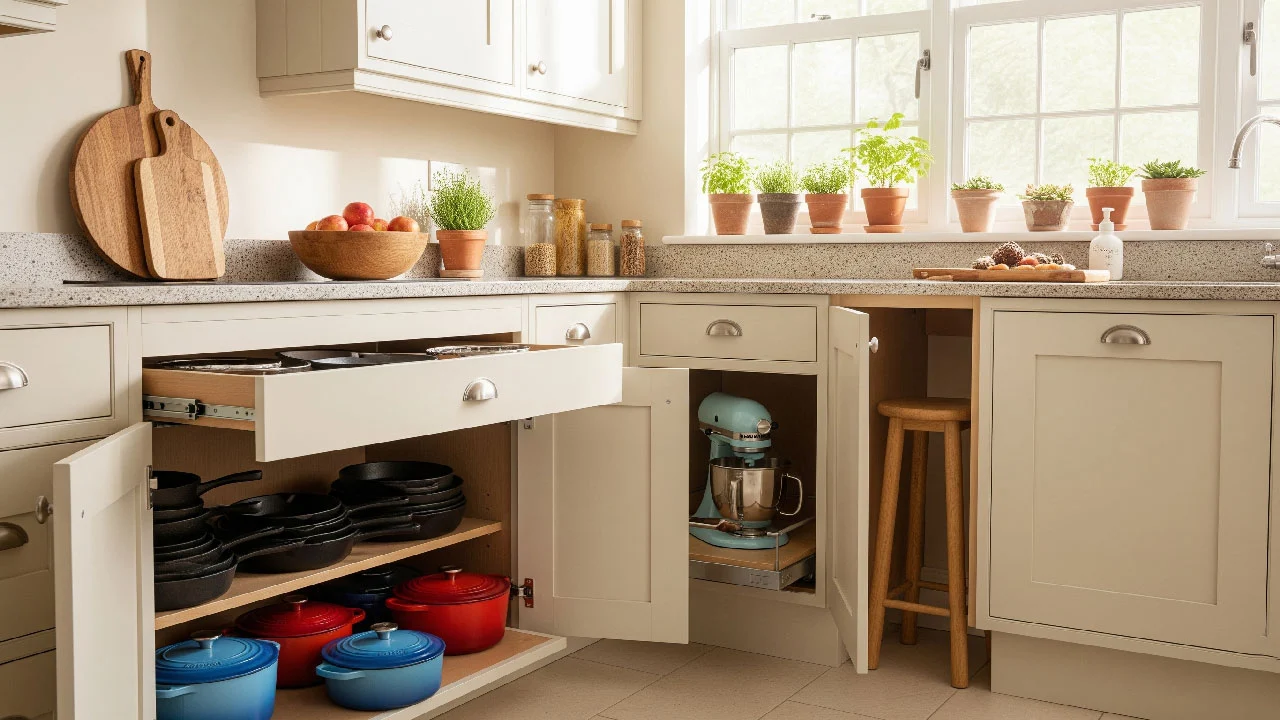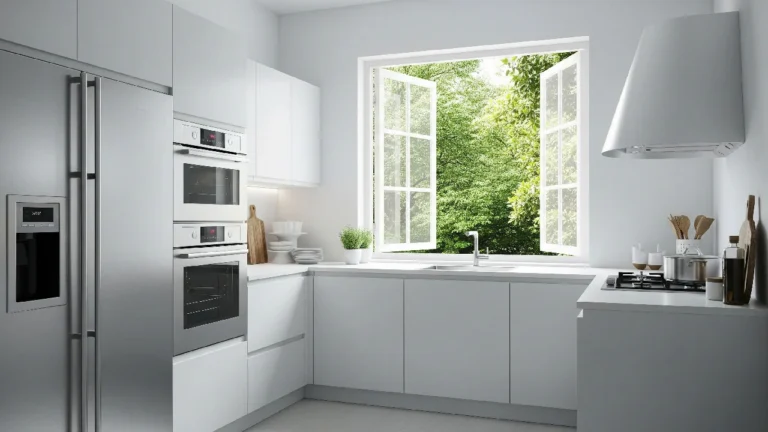Where Should You Store Heavy Items in the Kitchen? Homemaker’s Guide
Find out the safest and easiest spots that will save your back and make cooking a breeze!

Hello dear! If you’ve ever tried to pull down a big pot from a high shelf or lift your stand mixer from an awkward spot, you know it’s not just tiring; it can be risky too.
After years of running my kitchen, I’ve learned the smart and safe ways to store heavy items so that cooking feels easier and my kitchen stays tidy. Today, I’m sharing those tips with you.
Why Heavy Items Need Special Storage
Heavy items in the kitchen are not just inconvenient; they can be risky.
- Lifting from a high shelf can cause accidents.
- Cabinets can sag under too much weight.
- Repeatedly carrying heavy appliances can strain your back.
That’s why knowing where to put things in kitchen cabinets and drawers is so important. Good storage keeps your kitchen safe, saves time, and makes cooking a joy instead of a chore.
Where Should You Store Heavy Items in the Kitchen?
The golden rule: Keep heavy items below your waist and near where you use them
Here’s how I do it at home:
1. Base Cabinets Near the Stove
I keep my heaviest Pots, Ovens, and Cast-Iron Pans in the bottom shelves right beside the stove. This way, I don’t have to lift them high, and they’re always ready when I’m cooking.
I use a rubber mat to stop slipping. You can also do that. If possible, use a pull-out tray so you can slide items forward instead of reaching in awkwardly.
2. Deep Pull-Out Drawers
If you have deep drawers, you’re lucky! They are perfect for heavy pans, mixing bowls, and small appliances. Pulling a drawer toward you is much easier than bending down into a cabinet.
Make sure the drawer is strong enough to carry the load. It is better to use dividers for lids and baking trays so everything stays neat.
3. Lowest Shelves in the Pantry
For items you don’t use every day, like a slow cooker or bulk bags of rice, keep them on the pantry floor or the very bottom shelf in sturdy bins. You can just slide the bin forward when needed.
4. Corner Cabinets with Lazy Susans
Corner cabinets can be tricky, but a lazy Susan or corner pull-out works wonders. Keep heavier pans near the pivot so you can grab them without overreaching.
5. Kitchen Island Base
If you have an island, the base is perfect for heavy appliances like a stand mixer. I sometimes even keep my mixer on a safe corner of the counter if I use it daily — no lifting needed!
You can also read: 32 Essential Kitchen Items for a New Home
How to Organize Heavy Items in a Small Kitchen?
To organize heavy items in a small kitchen, always keep heavy items low, use pull-out drawers for deep spaces, and divide them into groups by use. This way, even a small kitchen feels organized and easy to work in.
Even in a small kitchen, you can manage heavy items smartly. You can divide your items into 3 groups and keep them near where they are used:
- Preparation Zone – Store food processors, air fryers, or slow cookers on the lowest pantry shelves or island bases. Use sturdy bins with handles for easy pulling.
- Cooking Zone – Keep big pots, Dutch ovens, and cast-iron pans in the base cabinets near the stove. Use pull-out shelves or mats so they slide out easily, and store lids upright with dividers.
- Baking Zone – Put your stand mixer, mixing bowls, and trays together in a low cabinet or deep drawer. Stand trays and boards upright to save space, and keep the mixer on a low pull-out or countertop if it’s heavy.
Common Mistakes to Avoid
Many people store heavy items in the kitchen wrong way, which causes more problems than benefits. So just avoid the following things:
- Keeping heavy pots or appliances on top shelves.
- Piling heavy items behind lighter ones.
- Using weak shelves that can’t hold weight.
- Putting a mixer or heavy appliance on top of the fridge.
Extra Tips:
Here are some extra tips I’ve learned from experience:
- Always check that shelves are strong enough, especially when they are made of wood.
- Use rubber mats that help prevent slipping and noise.
- While lifting heavy items, first slide it toward you, then lift, keeping your back straight.
- Label shelves or bins so that everyone knows what they contain.
- Use childproof latches with cabinet drawers if you have kids at home.
Bottom Line
If you remember one thing from this guide, let it be this: Store heavy items low, close to where you use them, and in a way that lets you pull them forward instead of lifting awkwardly.
Trust me, a little planning makes a huge difference. Once you try these tips, your cooking experience will change.
Featured image: Created with AI


